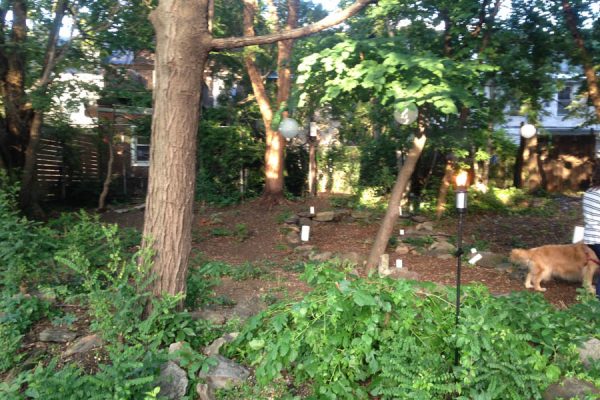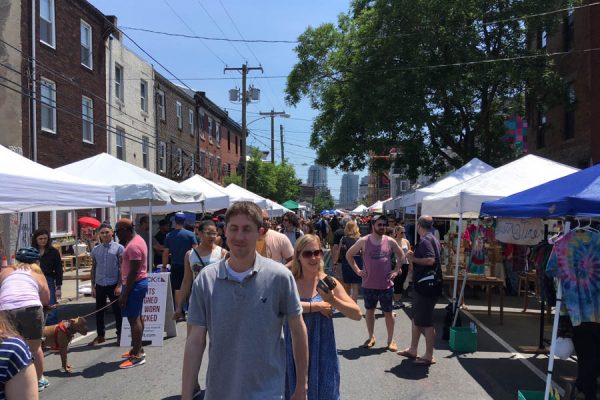Representatives From Local Health and Environmental Organizations Educate Neighbors About Dealing With Lead In The Soil
On Monday, March 5, representatives from the Environmental Protection Agency (EPA), the Center for Disease Control (CDC) and The Philadelphia Department of Public Health attended a Fishtown Action (FACT) meeting held in Holy Name’s Church Hall. These representatives made themselves available to answer questions about local lead emissions. Health professionals who were on hand to present information and answer questions were Jack Kelly, EPA On Scene Coordinator (Hazardous Site Cleanup Division); Ana Pomales, Regional Representative for the Agency for Toxic Substances and Disease Registry (ATSDR), Region 3; Alex Mandell, Community Involvement Coordinator for EPA Region 3; and Robert Himmelsbach, Program Manager for the Philadelphia Department of Public Health’s Childhood Lead Poisoning Prevention Program.
As those who live in the neighborhoods know, Anzon Incorporated once located at Aramingo and Clearfield, was shut down back in 1996 due to environmental concerns. Built in the mid-1800s, the factory was used over the years to make lead-based paint and other lead products before Anzon took it over. In 1987, EPA tests confirmed the presence of high and potentially unhealthy levels of lead in the soil around the plant. Consequently, Anzon agreed to impose stricter pollution controls.
In 1991, a rooftop storage tank overflowed at Anzon, discharging lead oxide dust. This accident forced neighbors to evacuate their homes for a brief period. Local neighbors filed a class-action lawsuit in Philadelphia Common Pleas Court. In that suit, locals claimed that unsuitable maintenance and unsafe storage instigated the accident. Furthermore, neighbors complained about an extensive history of environmental problems at the plant, asserting that it affected the health of people in the neighborhood.
The EPA was active in assessing and addressing this problem early on. If you are from here, you most probably know this story in detail. Most of us know at least one person who was involved in that class-action lawsuit. If you are new to the area, this may come as a bit of a shock. Either way, the question remains: “Why now?” Why is the EPA and several other organizations sending out representatives to address these concerns now? The answer is simpler than you might think. One reason is that over time, EPA standards may change, leading the agency to revisit certain environmental issues. Additionally, issues of lead emissions started taking a certain priority after a case study was published over a decade ago by the American Public Health Association.
In 2001, William Eckel conducted a study as part of his doctoral thesis at George Mason University in Fairfax, Virginia. Eckel spent six years on this research. In the study, he listed the sites of more than 600 former lead smelting factories in 35 states located around the nation. He claimed that these sites are filled with potentially hazardous levels of lead in the soil. Most of these sites are concentrated in urban industrial centers. Eckel found the sites by looking in old industry directories. He then crosschecked his results against state and national databases.
Eventually, the discoveries of this article led to the EPA’s current initiatives in community engagement. “I thought the best thing was to do an urban educational outreach program,” stated Jack Kelly. With ongoing research, Kelly and his coworkers are forming a plan that will continuously evaluate and deal with the lead emissions in the soil of local residencies.
In the meantime, there are actions we can take to address the concerns ourselves. Generally, as adults, we are not in danger of lead poisoning. Those highly susceptible are young children who live in houses with bare dirt yards. “Lead is an element,” proclaimed Ana Pomales, “It does not break down. It does not go away.”
Ana went on to state, “Lead is a naturally occurring metal found in small amounts in the earth’s crust. Lead can be found in all parts of our environment. Much of it comes from human activities including burning fossil fuels, mining, and manufacturing. Lead itself does not break down, although lead compounds can be changed by sunlight, air, and water. When lead is released to the air, it may travel long distances before settling to the ground. Once lead falls onto soil, it usually sticks to soil particles.”
Over the years, the EPA has continued to investigate local lead emissions. For the most part, lead in the soil is a danger to children who dig in the soil, then put their hands in their mouths. That being said, if you have a bare dirt yard and a child that digs in it, you should cover that soil with new topsoil, sod, or cement. Cement is the best way to cover the lead in soil, but the most expensive. This seemed to be the primary message that Kelly and the team were trying to communicate to local neighbors. “As long as the lead is covered and there is no access to it, there is no real health concern,” said Kelly.
It would make sense that Anzon would be responsible for most of the lead emissions in the soil locally. This being said, there are other ways that lead creeps its way into our lives. Up until 1978, it was legal to sell lead paint in this country. Subsequently, houses are filled with it. Many of the houses, especially the older ones, have been painted with lead-based paint. Furthermore, if you live close to the highway, it is very possible you’ve been introduced to lead through car emissions.
FACT President, Maggie O’Brien said, “It seems to me that the government should have some responsibility in paying for this cost.”
Jack Kelly stated that if residents do have a bare dirt yard and young children in their families, there is a chance that there may be ways to find funding to cover the soil if it has a high lead content. However, these measures are looked into on a case-by-case basis.
Maggie also asked, “Does the city have a plan to test the children in our area?”
One thing the presenters stressed was getting your child tested for lead poisoning or high lead readings. “A child should always be tested,” said Robert Himmelsbach, “Next time you have your child in for a checkup, you should ask his pediatrician to test him or her for lead poisoning.” It may sound silly, but it’s better to be safe than sorry. If health insurance coverage is a problem, the city public health clinic at 3rd and Girard (321 W. Girard Ave.) will test your child for free or whatever you can afford to pay. There is also outreach being done to local pediatricians to promote lead poison testing. (To make an appointment at the Health Clinic, call 215-685-3803.)
An attendee asked Jack Kelly if planting vegetables at home in your yard was an issue. Kelly responded by informing the public that lead does not make its way into vegetables. However, all vegetables should always be thoroughly cleaned before consuming, especially leafy vegetables like lettuce. Even though lead cannot make it inside vegetables, it can lay on the surface.
Alex Mandell stated they will be gathering all information they can from these community meetings and figure out the best way to educate the public on the precautionary measures that should be taken with lead emissions.
I remember EPA doing community outreach when I was a kid. I remember them (or their contractors) in my yard doing soil measurements. I am glad that they are committing to this community outreach, especially in a geographic area that was so highly affected by industrial corporate greed. In the coming months, EPA will look to further its educational outreach in local neighborhoods.
“Assume that lead is everywhere, and be preventative,” Jack Kelly said.
With lead being everywhere in the city, it is especially important for local parents to take safety measure. If you have a child, please make arrangements to cover your soil in some way – with more soil, sod or cement. If you would like more information about lead in the soil, please refer to EPA’s fact sheet online: http://epa.gov/lead/pubs/403fs01.pdf.







